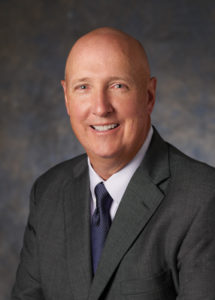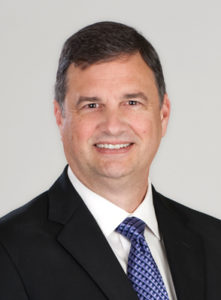
“Small businesses are the backbone of America.” It’s a refrain commonly uttered when conversation of the country and its economy intersect.
Cliche? Yes. However, numbers support the maxim; small businesses account for 44 percent of U.S. economic activity and create two-thirds of net new jobs in the country. The propitious impact the small business sector has on the local community surpasses that of its “big business” counterpart. A 2016 study from Penn State shows that smaller, locally-owned businesses pay higher wages to community members than larger, non-local businesses do. In fact, large companies tend to have a detrimental effect on the local economy.
In essence, for a local community to thrive, its small business sector must also thrive. That’s why the federal government’s Paycheck Protection Program is a vital lifeline, not only for the many small businesses in jeopardy of closing due to the pandemic, but also for the economic prosperity of the country. The Congress-approved $669 billion federal assistance package allows employers with 500 or fewer employees to apply for a maximum of $10 million in financial relief. The PPP loans are not without their stipulations, and to be forgiven for the entirety of the loan, businesses must use 60 percent of the loan amount on payroll costs, interest on mortgages, rent and utilities.

In Marin County, close to 8,000 businesses were approved for PPP loans, with most of those loans not exceeding $150,000. Napa County saw a much smaller number of borrowers, with around 600 loans distributed to local businesses. In Sonoma County, more than 1,500 businesses received upwards of $590 million in PPP loans.
According to Mike Sullivan, executive vice president of Exchange Bank in Santa Rosa, the demand was extremely high. “We ended up doing just shy of 1,800 loans, totaling $260 million. Seventy-five percent were for $150,000 or less. The vast majority of loans went to small businesses that needed them most,” Sullivan says. “If you look at the dollar-amount distributed, many people in the market are thankful these funds became available. Generally, I believe it will have a positive effect on the economy and the local employees.”

Chuck McPherson, partner at Leap Solutions, the Santa Rosa-based business management-consulting firm, assisted potential borrowers in understanding what PPP is and how to apply for it. McPherson says that initially, a few clients were apprehensive about applying for the PPP loan and felt it wasn’t necessary at the time; the more they understood about the terms and conditions of the loan and forgiveness, they eventually acted on it. “What we recommended to our clients was to open a separate bank account for the PPP funds, and every pay-period to review their payroll and expenses, reconcile and move the PPP funds over to the new account,” McPherson says.
Ready, set, loan!
As disorienting as the initial loan process appeared for borrowers, local lenders entrusted with servicing the loans had to adapt on the fly. For Exchange Bank, which is not a high-production lending business, the learning curve of handling such a high volume of loans was steep. “Every lending process within the bank changed to accommodate the volume. We deputized people who are not lenders to assist with the volume. We had to rebuild the organization internally during the time we originated these loans,” Sullivan says.
The “all-hands” effort of the bank enlisted employees in every department to originate the loans. Sullivan says from the first day the bank’s online portal for applications opened, the company knew its standard procedure for processing loans would need an overhaul. The bank jettisoned its software package for underwriting loans, a tool effective for commercial transactions but ineffective when managing high-volume PPP loans. The bank developed a new format for handling the demand, based around an Excel workbook and an Adobe form to streamline the process.
“The [bank’s] group of people showed we can accomplish a project or mission like this,” Sullivan says.
“Everyone stepped up as a team. I’m pleasantly surprised at the success of the PPP program; it got the money in the hands of businesses that needed it, and ultimately, to its employees.”
Ron Felder, chief financial and risk officer with Redwood Credit Union recalls the frenzy of the initial lending process. “The SBA’s system kept crashing because of the volume. We utilized 60 people from across the organization, working throughout the night to process the loans,” he says. “We funded more loans than any other credit union lender in California.”

Felder says that 92 percent of the volume handled by RCU involved smaller-sized loans that amounted to fewer than $150,000. It’s a number Felder is proud to point out; it’s an indicator of the lifeline extended to local small businesses.
One such business that received a loan through RCU is Santa Rosa’s venerable Italian institution, Canevari’s Deli. Kim Chambrone, deli manager, was pleased with the support her business received from RCU in the initial lending process. “They were as knowledgeable as they could be, given the lack of information in the beginning,” she says.
Canevari’s Deli received a loan just shy of $57,000. Chambrone says the funds were a vital cushion in offsetting the rising cost of supply and demand created by the pandemic. The loan also served as a stabilizing factor amidst such uncertainty. Chambrone knows of local businesses that refused to apply initially, and then realized how crucial the support would be and found it harder to secure a loan after hesitating. “We would have been foolish not to apply because these opportunities don’t come along very often,” she says.
The Flexibility Act
In some cases, the hesitation was due to a lack of comprehensive information. Because of the federal government’s necessitated rush to roll out the PPP to millions of struggling businesses, the terms of the loans were still being finalized as they were being distributed.
Sullivan says numerous borrowers were leery about applying for loans because of uncertain terms. “There was the negative press around the program from fraud,” he adds. “And the backlash of big-businesses getting loans that may not have needed them.”
The initial terms of the loans have been updated. The PPP Flexibility Act of 2020 intends to ease the process of forgiveness for borrowers struggling to meet the criteria. The major changes allow borrowers an extended window of time to spend loan funds and still qualify for forgiveness. The act increases the time borrowers must spend these funds from eight weeks to 24 weeks; borrowers who received loans with the initial 8-week forgiveness term still have the option of keeping this spending period provision.
Sullivan views the revisions of the forgiveness process as an important step toward meeting the needs of the borrowers. “The main reservation businesses had is if they could hire back their employees, and if the business would [have to] return to normal to get 100-percent forgiveness on loans,” he says. “The businesses that are not essential businesses have more of a hurdle to get 100-percent forgiveness because of hiring back all of its employees and offering them hours.”
Due to these concerns, the federal government implemented additional exceptions granting borrowers full-forgiveness, regardless of potential inability to rehire entire staff; borrowers now have a total of 24 weeks to restore staff to pre-COVID-19 levels, with Dec. 31, 2020, serving as the new cutoff. The revised forgiveness terms also let businesses delay payment of payroll taxes and extend the duration of the loan by three years while retaining the initial 1 percent interest rate. Perhaps the most significant takeaway from the Flexibility Act is the reduction of mandatory payroll spending from 75 percent to 60 percent.
According to McPherson, the adjustments on the terms of the initial loans were essential in accommodating borrowers’ needs. He says the issues of the limited spending time frame attached to the funds served as a deterrent for some for the first round of PPP dollars, but then the rules changed for the spending window, which helped those decide to apply for second-round funding.
Those who were approved in the first round—Leap Solutions being one such local business—were bound to the original time frame of spending the PPP dollars. “We didn’t know how long the shutdown would last and wanted to wait to use the funds, but we did not have a choice based on the rules,” he says. “Second round approvals had a lot more flexibility from a timing perspective.”
Loan checklist
To further assist borrowers in navigating the forgiveness process, the Small Business Association released a streamlined application of forgiveness—an updated version of the SBA 3508 form, called the SBA 3508EZ form. This form operates as a “checklist” for borrowers able to meet at least one of three requirements.
These requirements are: if a borrower is self-employed, or has no employees; the borrower did not reduce the salaries or wages of their employees by more than 25 percent, and did not reduce the number of hours for their staff; and if the borrower experienced reductions in business activity as a result of health directives related to COVID-19, and did not reduce the salaries of wages by more than 25 percent. Borrowers unable to satisfy one of the aforementioned requirements must refer back to the original SBA 3508 form.
McPherson says Leap Solutions is a part of the “pilot program group” with Redwood Credit Union for its loan forgiveness process and says the lenders are handling the review and submission of the forgiveness applications. However, he cautions that borrowers need to be proactive in completing the forms and submitting them to their lender for review. “The banks and credit unions have skin in the game,” he says. “They were paid to process the loans, so they’re going to be proactive at helping borrowers ensure the forms are accurate and submitted properly.”
The clarification and streamlined efforts toward an easier understanding of the forgiveness process is something Sullivan anticipates will assist borrowers with the forms. “I’m hoping some of the additional legislation pending will make it easier for smaller business borrowers who lack accounting advisors to assist them with the forgiveness terms,” he says. “It would be a shame if it was so complex that borrowers couldn’t complete the forgiveness application correctly, and then be denied 100-percent forgiveness.”
Past the point of forgiveness
As the dust settles on the disbursement of funds, businesses and lenders are now turning their attention to forgiveness and beyond. Some lenders and borrowers feel that yet another round of PPP loans will be necessary to offset a potential decline in sales in winter, and others worry about what effect the election will have on the stock market in its aftermath.

“I am seeing businesses be very conservative with their expenses; we did see furloughs and layoffs happening, but we are seeing some hiring going on too,” McPherson says. “If we roll into a recession in 2021, they may do another PPP program of some sort, and that program may need to have some back-end timing on it, similar to round two this year.”
McPherson says most companies Leap Solutions works with are reporting a 20 percent drop in revenue, while other businesses are booming due to their ability to “pivot” by reinventing their business models to accommodate the changing landscape.
Chambrone says Canevari’s Deli worked to meet the requirements of doing business in a pandemic-induced economy, and pivoted to fulfill the needs of take-out and curbside pickup.
“If it wasn’t for the community, we wouldn’t have stayed alive,” she says. “They supported us and made sure we stayed open. I’m very thankful that we were able to secure the loan when we did.”
The gratitude toward the funds is echoed among borrowers to their lenders. “I can’t tell you how many times we’ve had business owners tell us, ‘This is the difference of us surviving and not surviving,’” Sullivan says.
McPherson believes that in the end, the PPP saved many small businesses. “Businesses and employees are thankful for getting the PPP money, which helped them bridge some financial instability and retain their employees,” he says. “It helped them to ease their cash flow by spending money on expenses and maintaining their staff.”
Felder believes that small business owners weren’t necessarily looking for loans; they were looking for a way to stay afloat and cover their payroll. “Despite all of its challenges and the difficulties in figuring out the constantly evolving terms, it’s a program that helped a lot of businesses,” Felder says. “And there is likely going to be a continued need for another round of PPP going into the next year.”
While questions related to another wave of PPP funding have yet to be answered, one thing is for certain: the initial program provided relief that small business not only required, but deserved, in what amounted to a lifeline for America amid unprecedented, continuing hardship.
Author
-

Michael moved from Southern California to the North Bay in 2017, enrolling at Santa Rosa Junior College to pursue journalism and escape traffic. He was Co-Editor-in-Chief of the student paper. His work is published in The Press Democrat, The North Bay Bohemian, Pacific Sun and Sonoma Magazine.
View all posts



